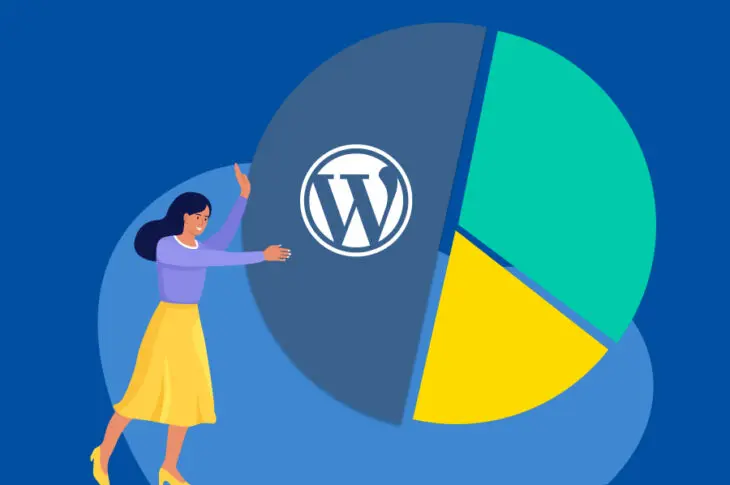There are a handful of reliable and popular Content Management Systems (CMSs) available today. Among them is WordPress, a free, open-source solution you may have heard of before. But just how widely used is WordPress, and what is its current and forecasted market share? We’ll cover that and more right here.
Now, whether you’re looking to start a personal blog, create an online store or any other type of business website, it’s important to choose a powerful platform. WordPress is certainly one of the most preferred solutions, but getting a deeper understanding of its usage might be helpful.
In this post, we’ll introduce you to WordPress and explain what makes it so popular. Then, we’ll dive into the specifics of its current market share and statistics. Finally, we’ll look at what to expect for its future growth. Let’s jump in!
WordPress: A Brief Overview
Before we get into its market share, we first want to cover some basic information about WordPress:
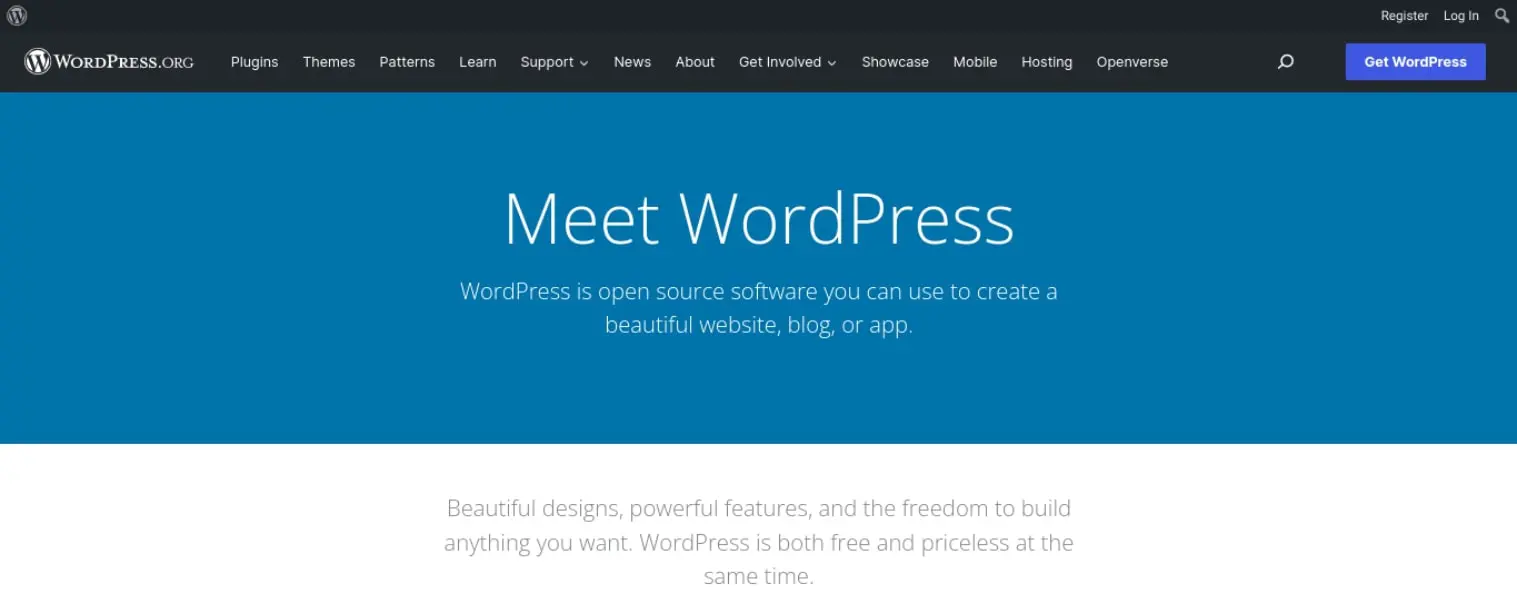
WordPress was founded in 2003 by Mike Little and Matt Mullenweg. It began as a blogging platform. Over the years, it has evolved to become one of the biggest open-source projects on the internet. It’s built on PHP and MySQL and is licensed under the General Public License (GPLv2).
WordPress.com vs. WordPress.org
It’s important to note the difference between WordPress.com and WordPress.org. Let’s start with WordPress.com. This is a commercial, for-profit company owned by Automattic, Inc.:
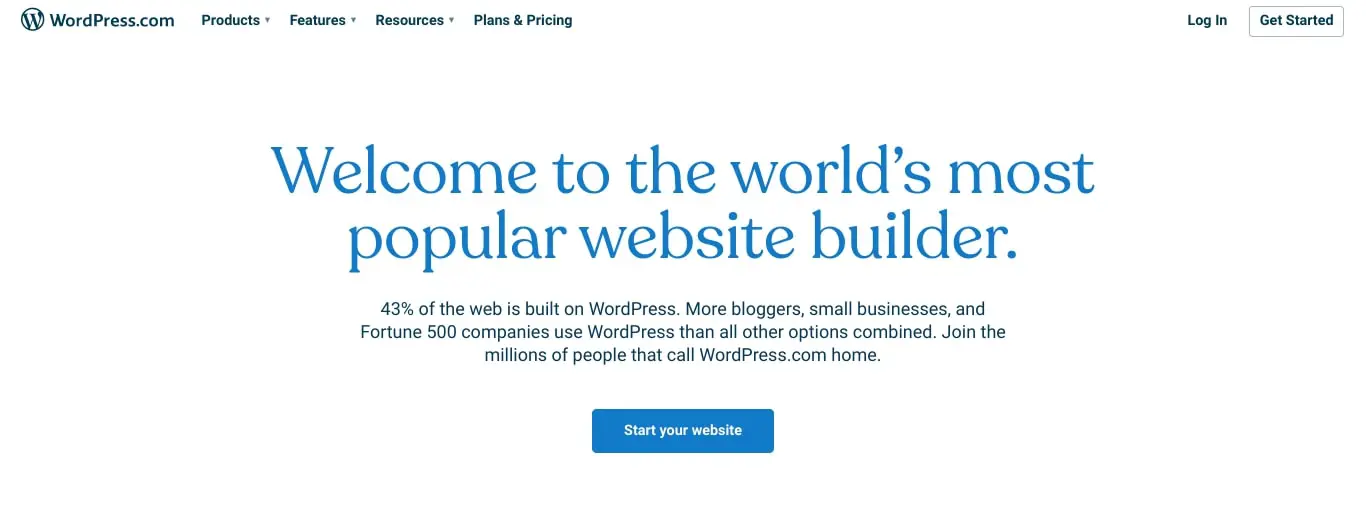
Meanwhile, WordPress.org is a non-profit organization that maintains the open-source codebase for WordPress. Both platforms offer free and paid hosting plans for individuals and businesses. The main difference is that WordPress.org is self-hosted..
Additionally, WordPress.com offers a limited set of features compared to WordPress.org. For example, you cannot choose your own domain name on WordPress.com – you must use a subdomain (e.g., “mysite.wordpress.com”) unless you opt for a premium plan. With WordPress.org, you can host your site on any web hosting provider of your choice and use a custom domain name (e.g., “www.mysite.com”).
Finally, WordPress.com is much more restrictive in terms of what you can do with your site. For instance, you can’t run any advertisements on your WordPress.com site unless you upgrade to the Business plan (which costs $300 per year). On WordPress.org, you can run ads on your site regardless of which hosting plan you choose.
Note that for this post, we’ll be looking at statistics for WordPress.org.
What Makes WordPress So Popular
There are many reasons why WordPress is such a popular CMS. To start, it is incredibly user-friendly and easy to use. Even if you are not familiar with code or web design, you can still create a beautiful website with different features.
You can use WordPress to create any type of website you can imagine, from a simple blog to a fully functioning e-commerce store. There are also thousands of free themes and plugins available that enable you to easily customize your website and make it look exactly the way you want it to:
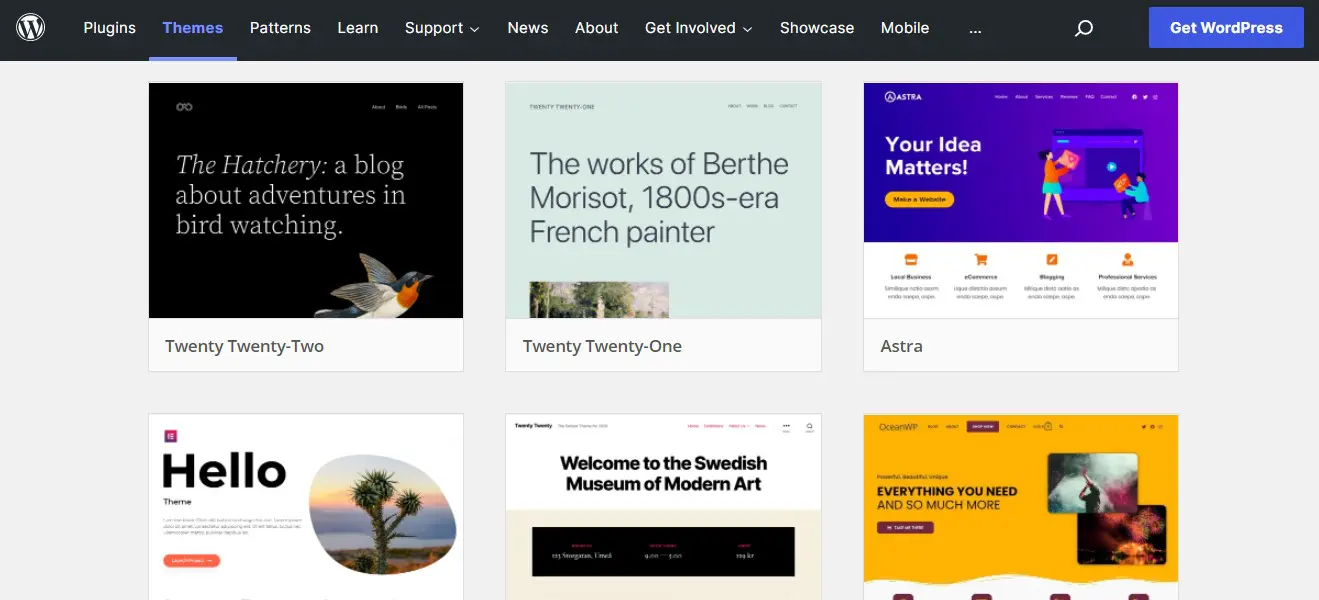
WordPress is also free to download and use. It is open-source software, meaning there are no licensing fees to use it. That said, you do need to purchase a domain name and hosting plan to take your site live. However, there are many options available out there, many of which are relatively inexpensive.
Another reason WordPress is popular is that it is very secure. WordPress websites are regularly updated with the latest security patches, making them much less likely to be hacked than other platforms.
Additionally, WordPress websites are easy to maintain. Once your site is up and running, you won’t need to do much in order to keep it going, especially if you use a managed WordPress hosting provider. Plus, WordPress automatically handles most of the maintenance for you, including updates.
Finally, there is a large community of WordPress users who are always willing to help out if you need assistance. From online tutorials and videos to support forums and documentation, there is always plenty of support available to help you troubleshoot issues and learn the ins and outs of the CMS.
WordPress Market Share Statistics 2022-2023
According to W3Techs, WordPress is currently used by 64.1% of all the websites with a known CMS. This means that WordPress powers 42.9% of all websites.
So how does WordPress’ market share compare to other CMSs on the web? Below are the CMSs that come behind WordPress in terms of market share:
- Shopify (6.5%)
- Wix (3.4%)
- Squarespace (3.0%)
- Joomla (2.5%)
- Drupal (1.9%)
As you can see, WordPress is the CMS with the biggest market share. Now, let’s break down WordPress usage by versions and subcategories.
WordPress Versions and Subcategories
The most popular version of WordPress is 5. This is used by 92.5% of WordPress users and is followed by:
- Version 4 (7.1%)
- Version 3 (0.4%)
- Version 2 (>0.1%)
- Version 1 (>0.1%)
More specifically, the majority of WordPress users (53.8%) use WordPress 5.9, followed by 5.8 (10%) and 5.7 (5.2%):
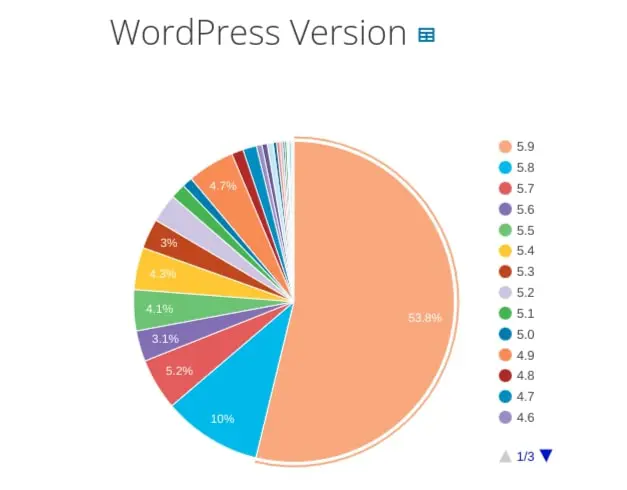
In addition to using the latest versions of WordPress, the CMS also recommends staying up to date on PHP versions. The majority of WordPress sites (91%) are using 7.0 or higher:
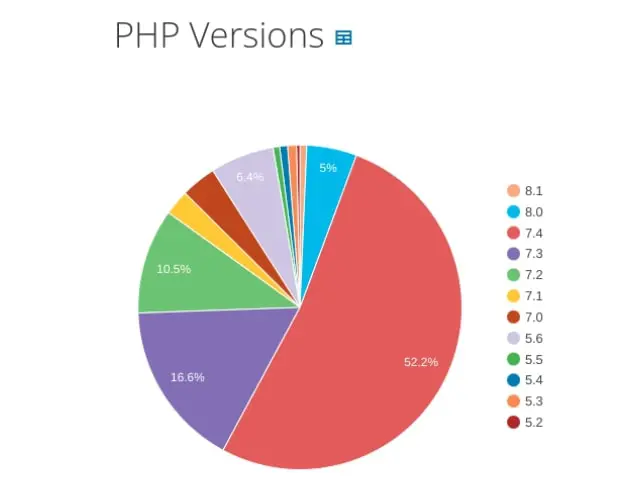
WordPress usage statistics can also be examined by subcategories. A large portion of WordPress site owners use the e-commerce plugin WooCommerce, as well as popular page builders such as Elementor and WPBakery.
Let’s look at the percentages of WordPress users that use these subcategories of the CMS:
- WooCommerce (20.3%)
- Elementor (17.1%)
- WPBakery (14.4%)
- Beaver Builder (1.0%)
These powerful plugins are part of what makes WordPress so useful, even for beginners. They can help you turn your site into a full e-commerce shop and simplify the process of designing and building pages.
WordPress Historical Trends and Usage
Looking at historical trends, WordPress usage has remained relatively steady over the past year, increasing from 41.2% in May 2021 to 42.9% in May 2022:
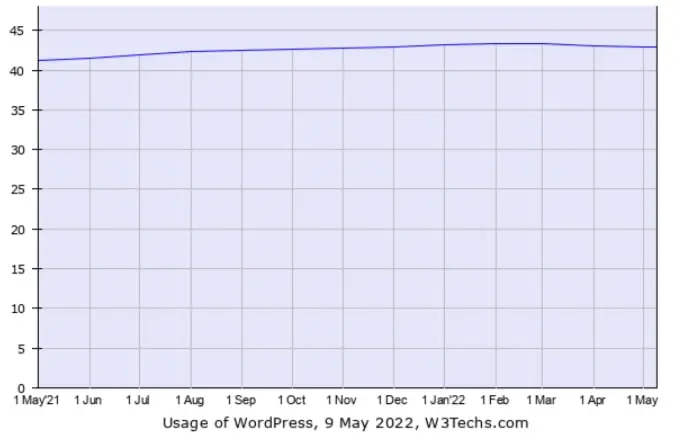
Since 2019, the CMS has grown from being used by 32.7% of the top 10 million most-visited sites globally to 42.9%. This marks significantly greater growth than any other CMS.
According to data from BuiltWith, there are over 30,000,000 live websites currently using WordPress:
Alt text: WordPress usage statistics.
The countries with the most WordPress websites include:
- United States (8,858,380)
- United Kingdom (769,864)
- India (375,206)
- Japan (344,831)
- Russia (344,656)
- Germany (342,829)
- Canada (291,522)
The top locales for WordPress are English (44%), Spanish (6%), and Japanese (5.8%):
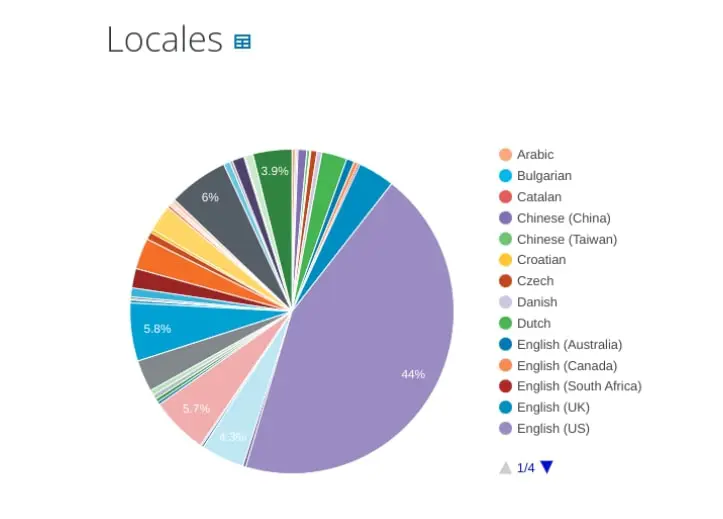
Of the top one million sites, WordPress accounts for 35.41%. It also powers 33.53% of the top 100,000 websites and 33.54% of the top 10,000.
Market Position and Popular Sites
W3Techs data shows that, compared to other CMSs, WordPress’ market position in terms of popularity and traffic is used by many more sites, including those that receive high levels of traffic:
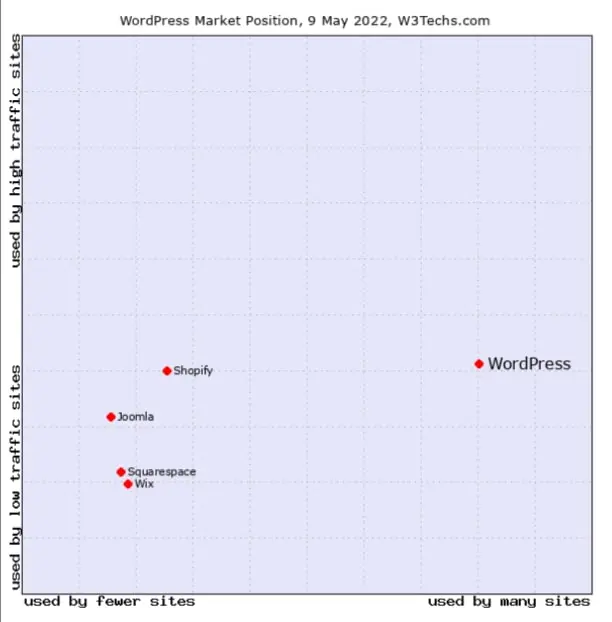
Platforms such as Joomla, Shopify, and Squarespace are used by fewer sites. They also tend to be more common for low-traffic sites compared to WordPress.
WordPress originally started as a blogging platform. Therefore, it’s unsurprising that many site owners still turn to the CMS as their go-to blogging solution. This becomes more evident when you look at the numbers. In fact, a whopping 97% of blogs are built using WordPress:
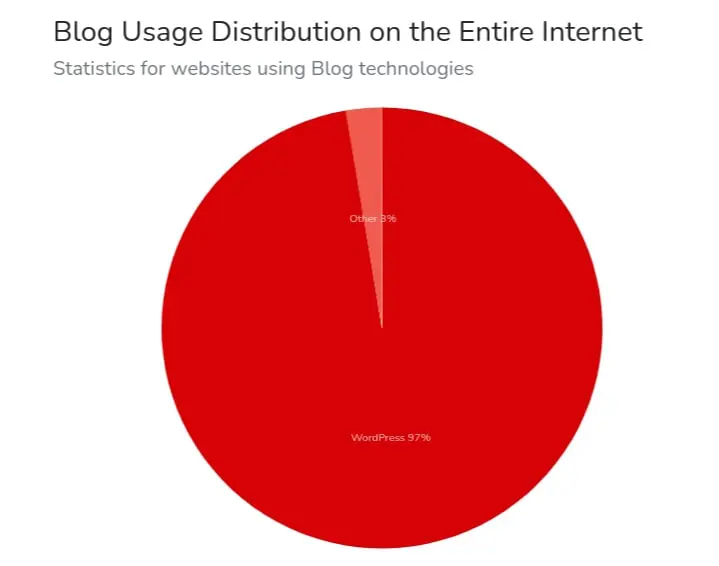
There are several well-known websites currently using WordPress. These include:
There are also some websites that only just recently started using WordPress. In addition to Alibaba.com, this includes Dell.com, Bloomberg.com, and Newegg.com.
What to Expect for the Future of WordPress
Given WordPress’ widespread popularity and versatility, it’s fair to expect its market share and growth to increase over the next few years. WooCommerce, acquired by Automattic in 2015, has helped give WordPress a competitive edge.
According to BuiltWith, WooCommerce Checkout powers nearly one-third of all e-commerce websites. As more businesses move online, it’s likely that an increasing number of site owners will turn to WordPress as a user-friendly, e-commerce solution.
Contributing to its growth is WordPress’ recent pivot to Full-Site Editing (FSE), which has made it easier than ever to build and customize websites on this platform. The Gutenberg block editor has been making significant strides in becoming a more intuitive site-building platform for developers, designers, and beginners.
In just 20 years from its first inception, WordPress has demonstrated exponential growth that is far greater than its competitors. As it continues to gain popularity, we can expect to see more small businesses and large organizations using it to build their websites. We can also expect to see more people becoming involved in the WordPress community.
Learn What WordPress Can Do For You
As a website owner, choosing a reliable and powerful CMS is imperative. As one of the most widely used and flexible options on the market, WordPress is a solution worth considering.
As we discussed in this article, WordPress currently holds the majority of CMS market share, powering nearly 43% of all websites. From simple blogs to sophisticated e-commerce sites, it is a robust platform to help site owners of all experience levels create a beautiful, functional website.
Are you ready to see what WordPress can do for you? Then, check out our WordPress managed hosting services to learn how our solutions can help you get started with your new site in no time!

Do More with DreamPress
DreamPress Plus and Pro users get access to Jetpack Professional (and 200+ premium themes) at no added cost!
Check Out Plans